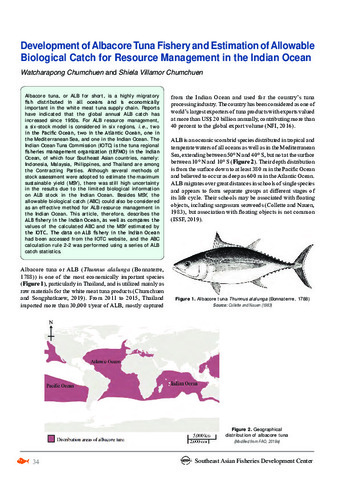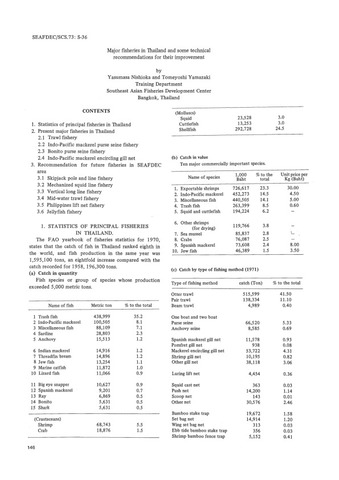| dc.description.abstract | Albacore tuna, or ALB for short, is a highly migratory fish distributed in all oceans and is economically important in the white meat tuna supply chain. Reports have indicated that the global annual ALB catch has increased since 1950s. For ALB resource management, a six-stock model is considered in six regions, i.e., two in the Pacific Ocean, two in the Atlantic Ocean, one in the Mediterranean Sea, and one in the Indian Ocean. The Indian Ocean Tuna Commission (IOTC) is the tuna regional fisheries management organization (tRFMO) in the Indian Ocean, of which four Southeast Asian countries, namely: Indonesia, Malaysia, Philippines, and Thailand are among the Contracting Parties. Although several methods of stock assessment were adopted to estimate the maximum sustainable yield (MSY), there was still high uncertainty in the results due to the limited biological information on ALB stock in the Indian Ocean. Besides MSY, the allowable biological catch (ABC) could also be considered as an effective method for ALB resource management in the Indian Ocean. This article, therefore, describes the ALB fishery in the Indian Ocean, as well as compares the values of the calculated ABC and the MSY estimated by the IOTC. The data on ALB fishery in the Indian Ocean had been accessed from the IOTC website, and the ABC calculation rule 2-2 was performed using a series of ALB catch statistics. | en |




